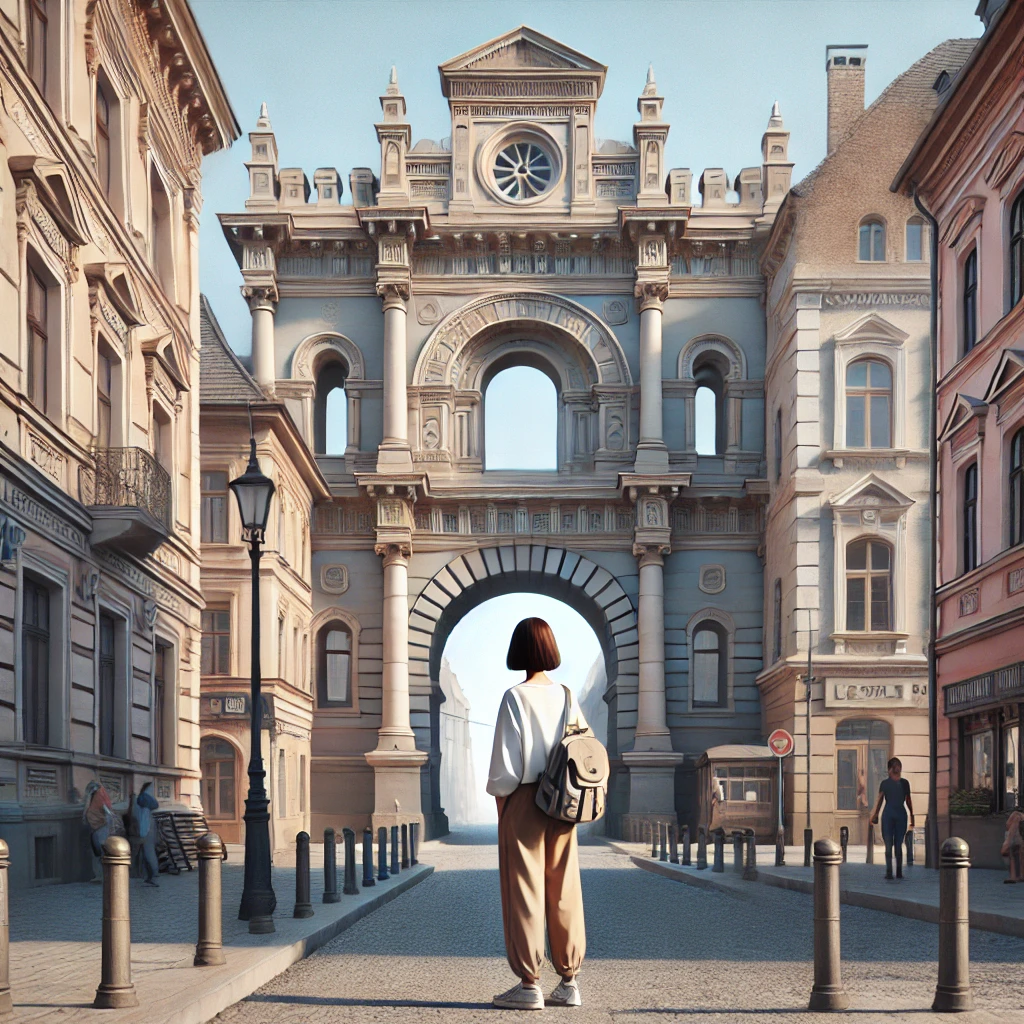ChatGPT:
Vilnius, the capital of Lithuania, is one of the oldest and most historically rich cities in the Baltics. It was first mentioned in written sources in 1323, in letters sent by Grand Duke Gediminas inviting German and Jewish merchants and craftsmen to settle in the city. This act is generally considered the founding of Vilnius, though the area had been inhabited for centuries prior. Gediminas’ decision to establish Vilnius as his capital was key to its early growth, as the city quickly became a significant political and cultural hub in the Grand Duchy of Lithuania.
During the 14th and 15th centuries, Vilnius grew rapidly as a center of trade, commerce, and diplomacy. It also became an important religious center, home to Orthodox, Catholic, and Jewish communities. In 1387, Lithuania adopted Christianity, and Vilnius was granted the rights of a city under Magdeburg Law, which allowed for more self-governance and attracted a diverse population.
The city’s development continued in the 16th century, during the reign of the Jagiellonian dynasty, when Vilnius became an intellectual center. The founding of Vilnius University in 1579 by Stephen Báthory marked an era of cultural and scientific advancements, contributing to the spread of Renaissance and Baroque influences in its architecture.
Vilnius faced numerous hardships in the following centuries, including wars, occupations, and plagues. In the 18th century, it was occupied by the Russian Empire after the partitions of the Polish-Lithuanian Commonwealth. It remained part of the Russian Empire until the early 20th century, during which time it became a contested city, caught between Russian, Polish, and Lithuanian interests.
After World War I, Vilnius became part of the newly independent Lithuania, but it was soon occupied by Polish forces and became part of Poland from 1920 to 1939. It returned to Lithuania after World War II, but under Soviet rule, and only regained full independence after the dissolution of the Soviet Union in 1990.
Today, Vilnius is a vibrant city, known for its UNESCO-listed Old Town, a blend of Gothic, Renaissance, Baroque, and Neoclassical architecture. The city has grown into a modern European capital, with a focus on preserving its cultural heritage while fostering innovation and growth, making it one of the most dynamic cities in the region.
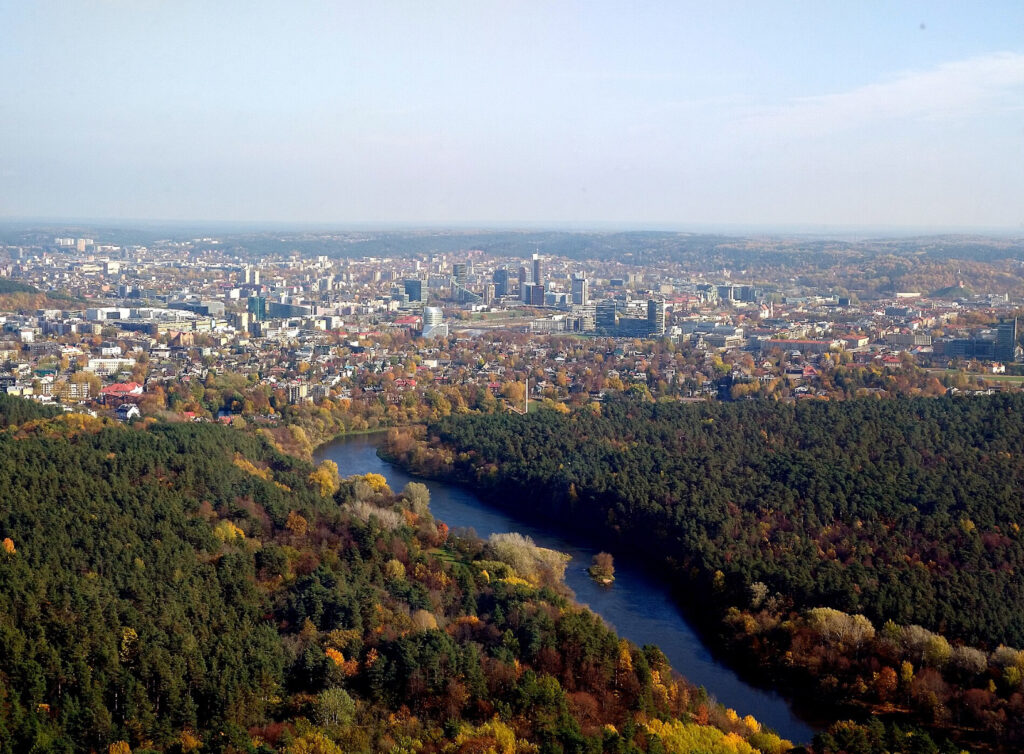
Vilnius boasts a rich array of historical monuments and tourist attractions that reflect its diverse heritage and vibrant cultural history. Some of the most notable sites include:
1. Vilnius Cathedral and Cathedral Square
• The heart of Vilnius, this neoclassical cathedral is dedicated to Saints Stanislaus and Ladislaus. Its origins date back to the 13th century, though it has been rebuilt several times. Cathedral Square is a central gathering place for the city.
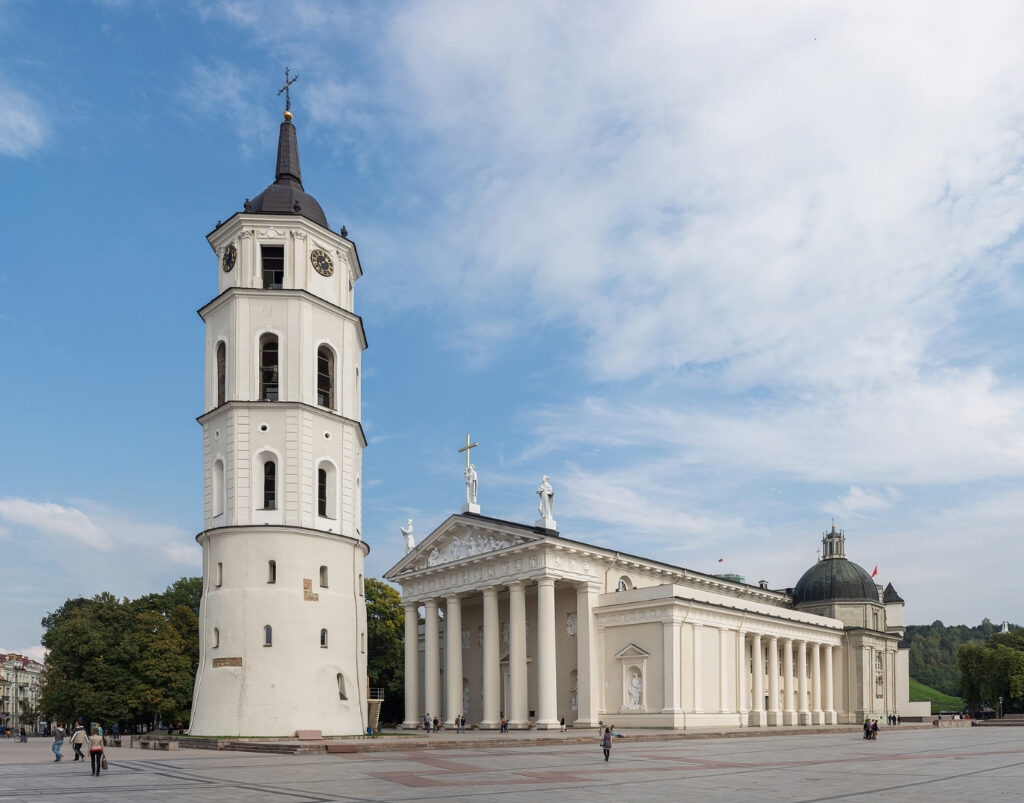
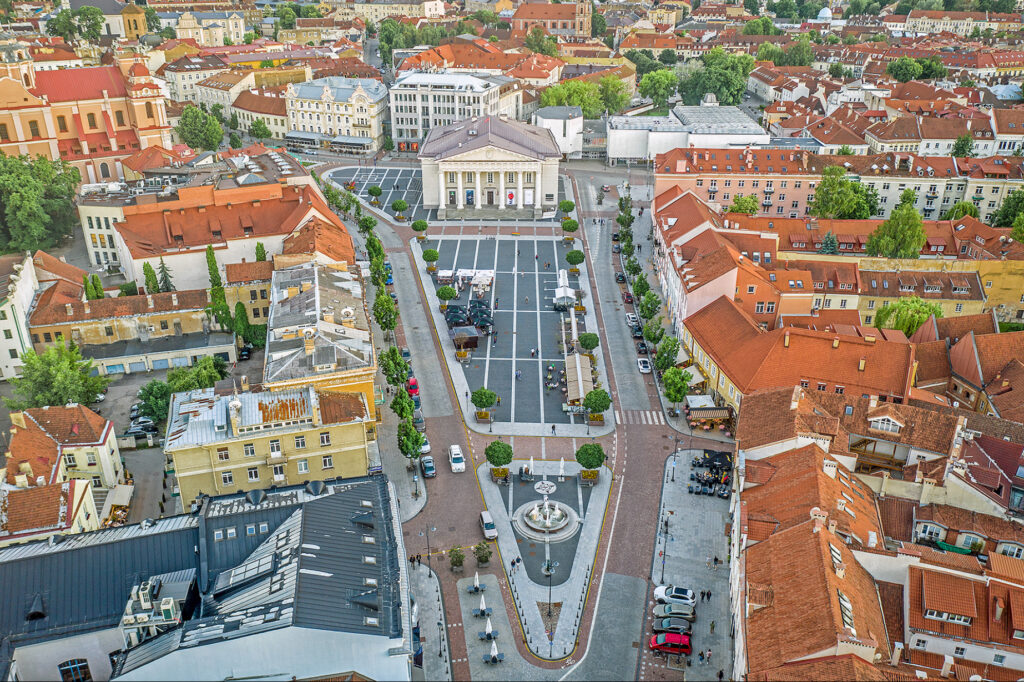
2. Gediminas Tower
• The symbol of Vilnius, Gediminas Tower is the remaining part of the Upper Castle. It offers stunning views of the city and houses a museum detailing the history of the city and the Grand Duchy of Lithuania.
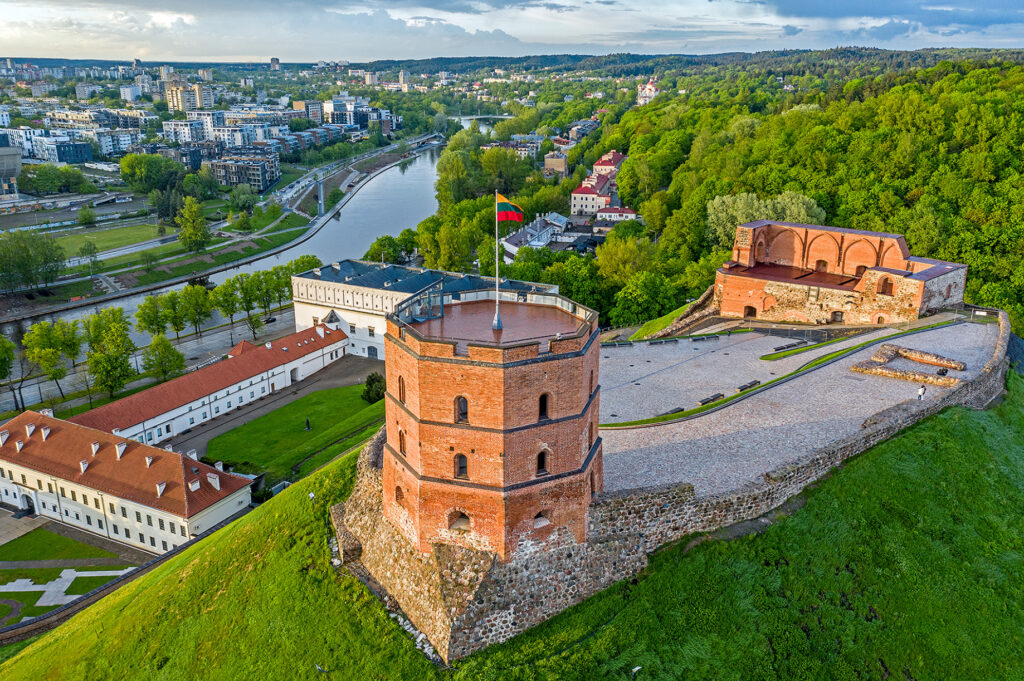
3. Vilnius University
• Founded in 1579, Vilnius University is one of the oldest in Eastern Europe. Its campus, with a blend of Gothic, Renaissance, Baroque, and Classical architecture, is a historical monument in itself.
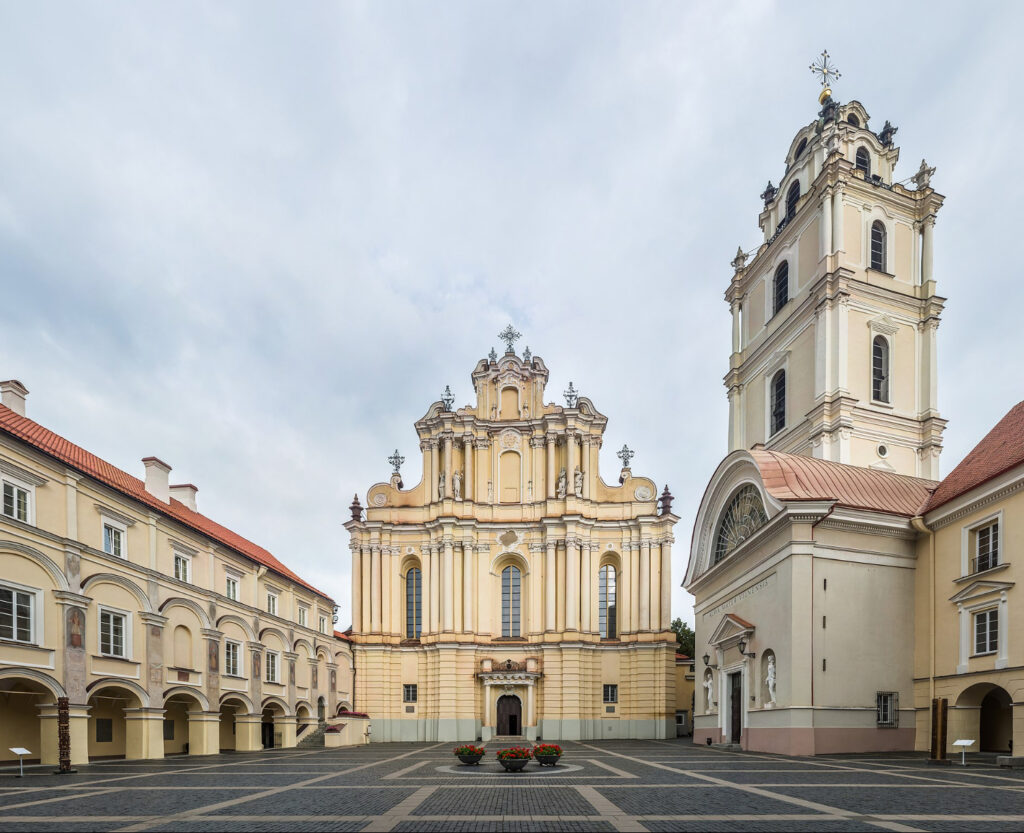
4. The Gates of Dawn (Aušros Vartai)
• One of the last remaining original city gates, this religious and historical site is famous for the Chapel of Our Lady of the Gate of Dawn, which houses an icon believed to have miraculous powers.
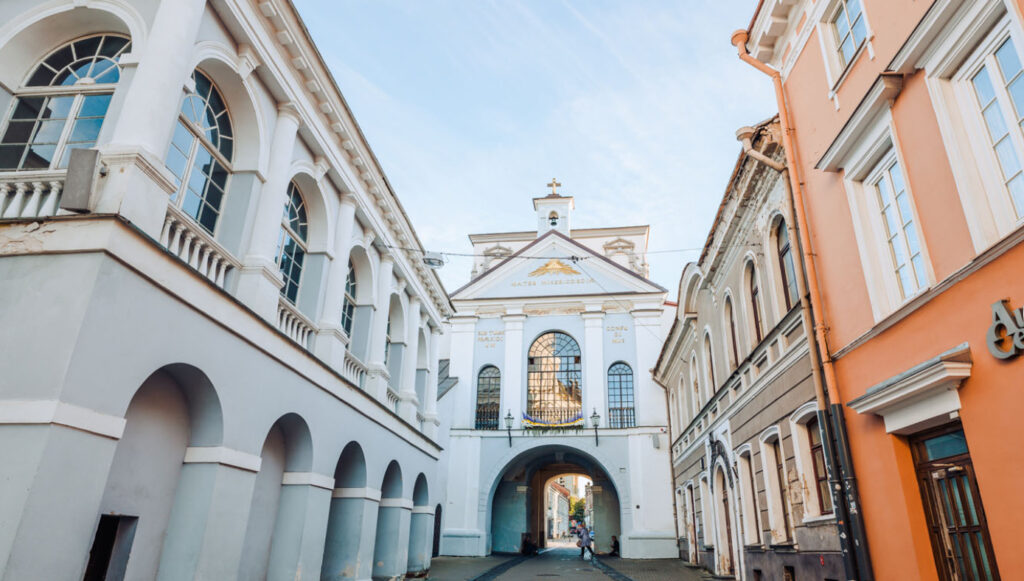
5. St. Anne’s Church
• A masterpiece of Gothic architecture, St. Anne’s Church is one of the most recognizable landmarks in Vilnius. Its intricate brickwork and stunning facade have made it a favorite for visitors and photographers.
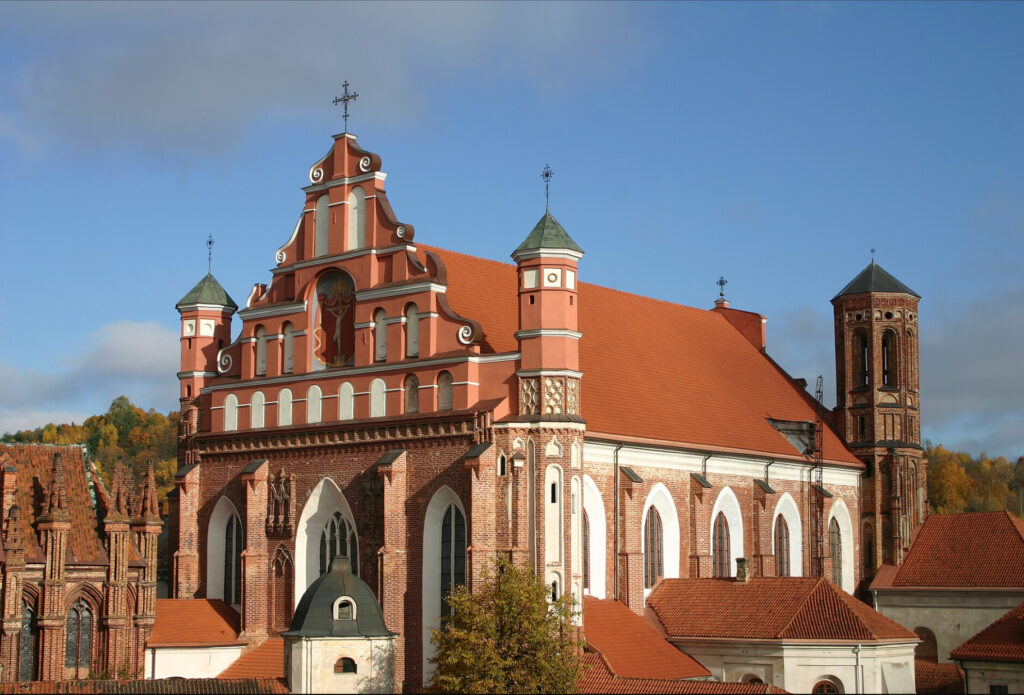
6. The Palace of the Grand Dukes of Lithuania
• Located near the Cathedral Square, this reconstructed palace was once the residence of the Grand Dukes of Lithuania. It now functions as a museum showcasing Lithuanian history and its royal heritage.
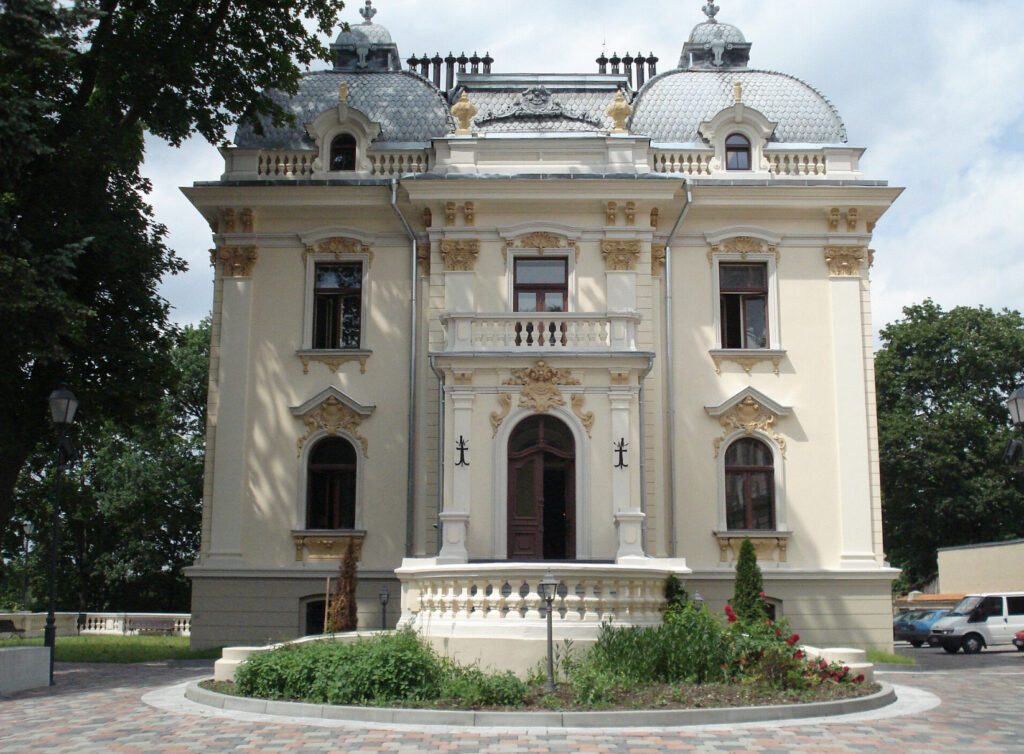
7. Vilnius Old Town
• A UNESCO World Heritage Site, the Old Town is one of the largest surviving medieval towns in Europe. Its winding streets are filled with historic buildings, churches, and squares, reflecting various architectural styles.
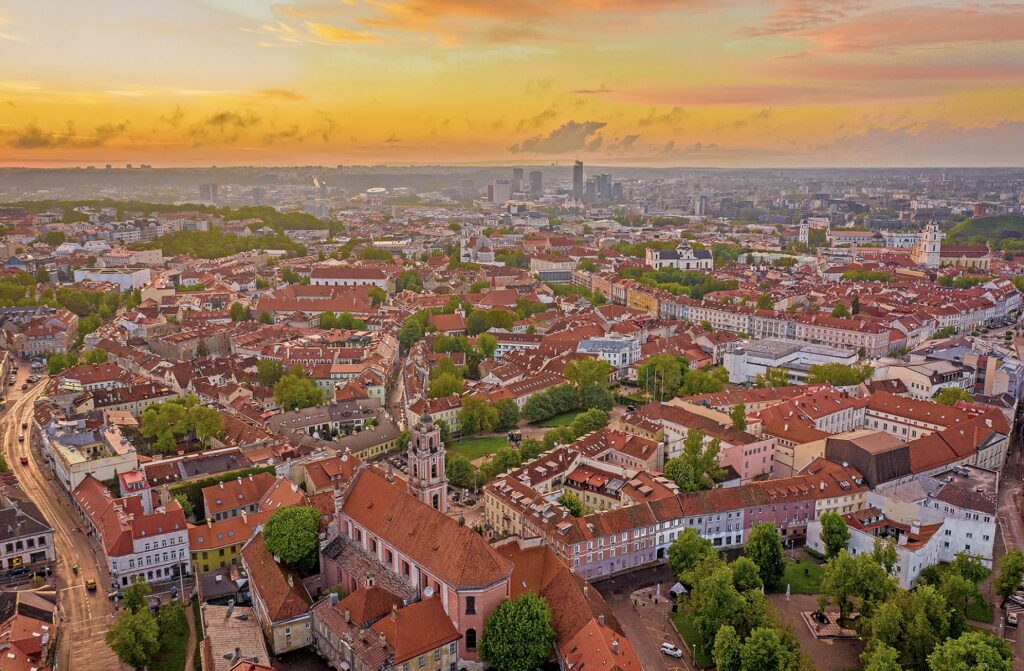
8. Uzupis District
• Known for its bohemian atmosphere, Užupis declared itself an independent republic in 1997. It has its own “constitution” and is filled with art galleries, sculptures, and a unique creative vibe.
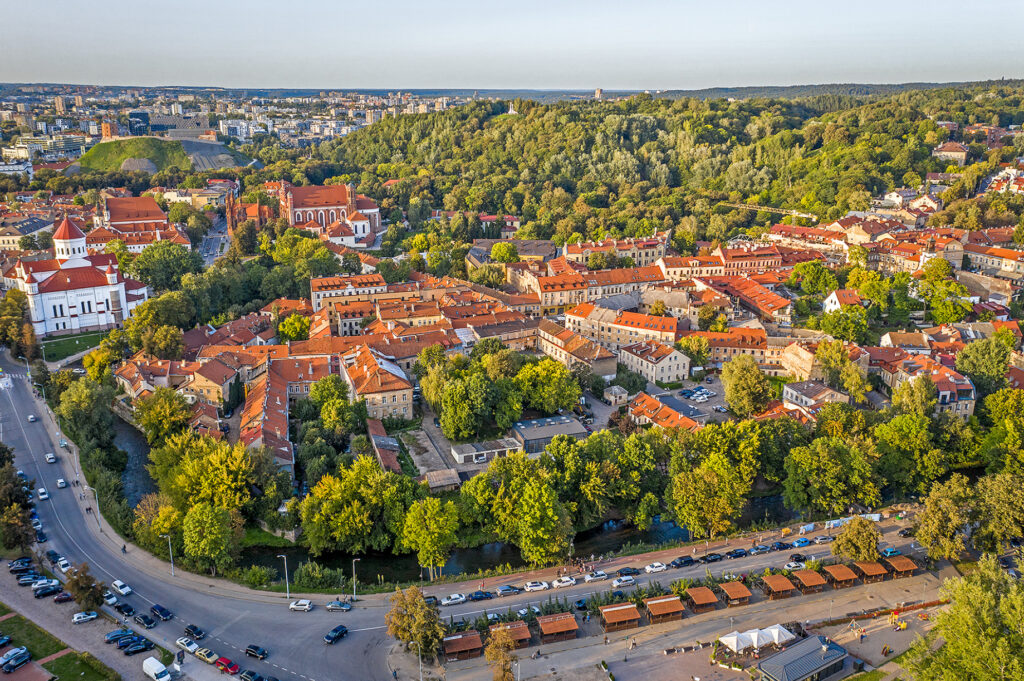
9. Three Crosses Hill
• Located in Kalnai Park, this monument commemorates the site where three monks were supposedly martyred. It provides panoramic views of Vilnius and is a symbol of the city’s resilience.
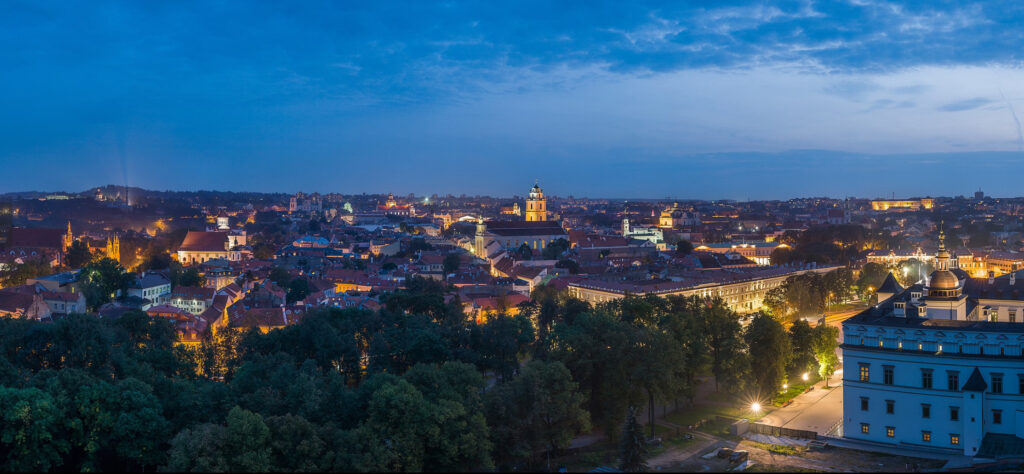
10. Museum of Occupations and Freedom Fights (KGB Museum)
• Housed in the former KGB headquarters, this museum details the dark period of Soviet occupation, featuring exhibits on political repression, deportations, and the Lithuanian resistance.
11. Church of St. Peter and St. Paul
• A stunning example of Baroque architecture, this church is famous for its intricately detailed white interior, with over 2,000 stucco figures adorning the walls.
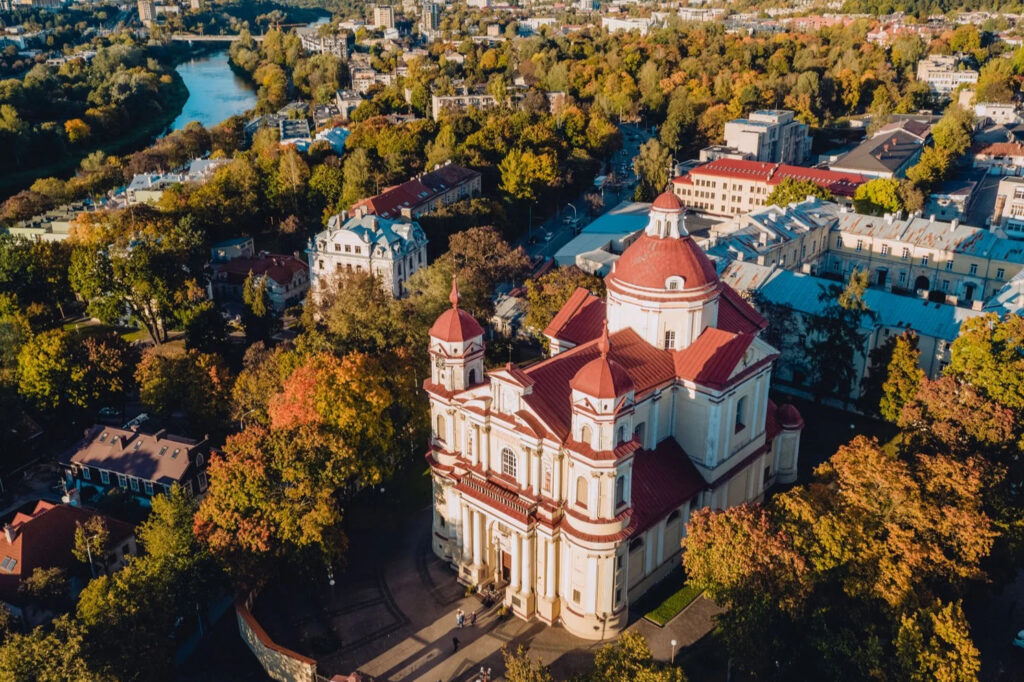
12. Bernardine Church and Monastery
• A large Gothic church, also with Renaissance and Baroque elements, located next to St. Anne’s Church. It was once part of a larger monastic complex and is known for its beautiful frescoes.

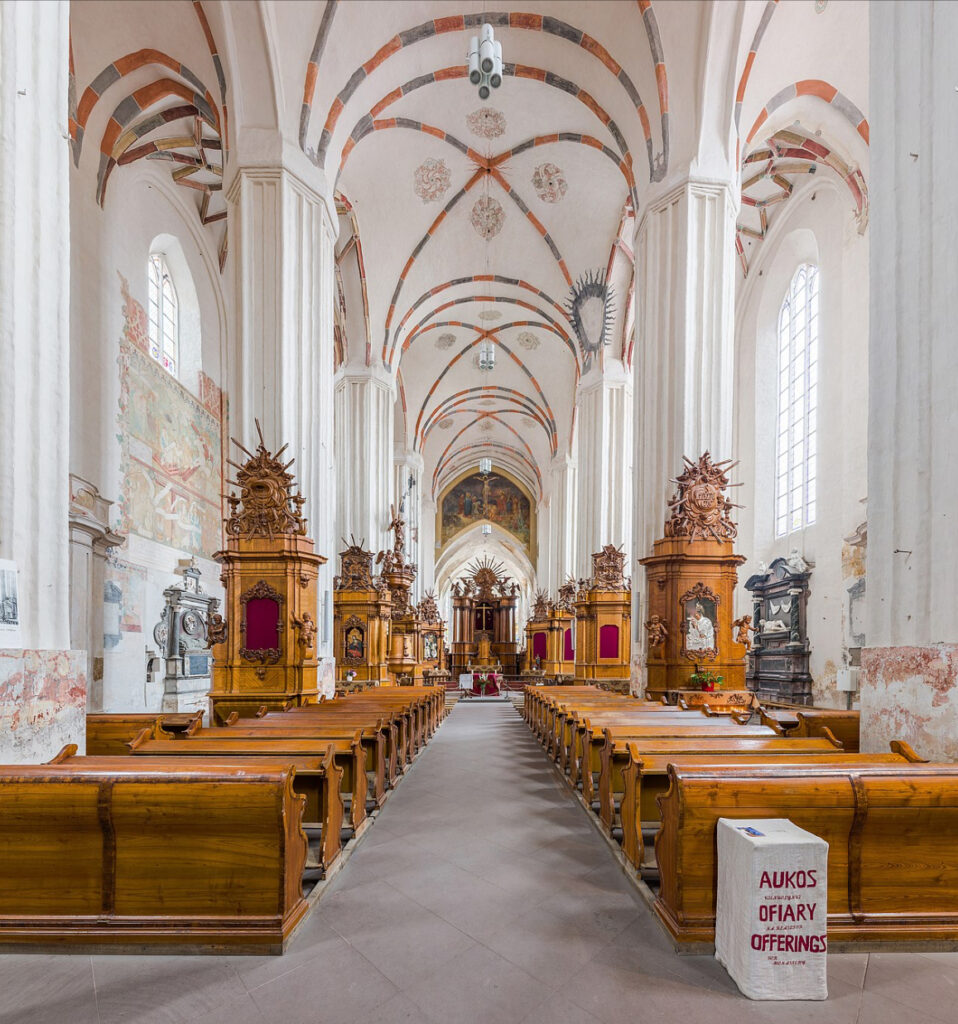
13. Vilnius TV Tower
• Standing at 326.5 meters, the TV Tower is the tallest structure in Lithuania. Visitors can enjoy a panoramic view from the observation deck and a rotating restaurant at the top.
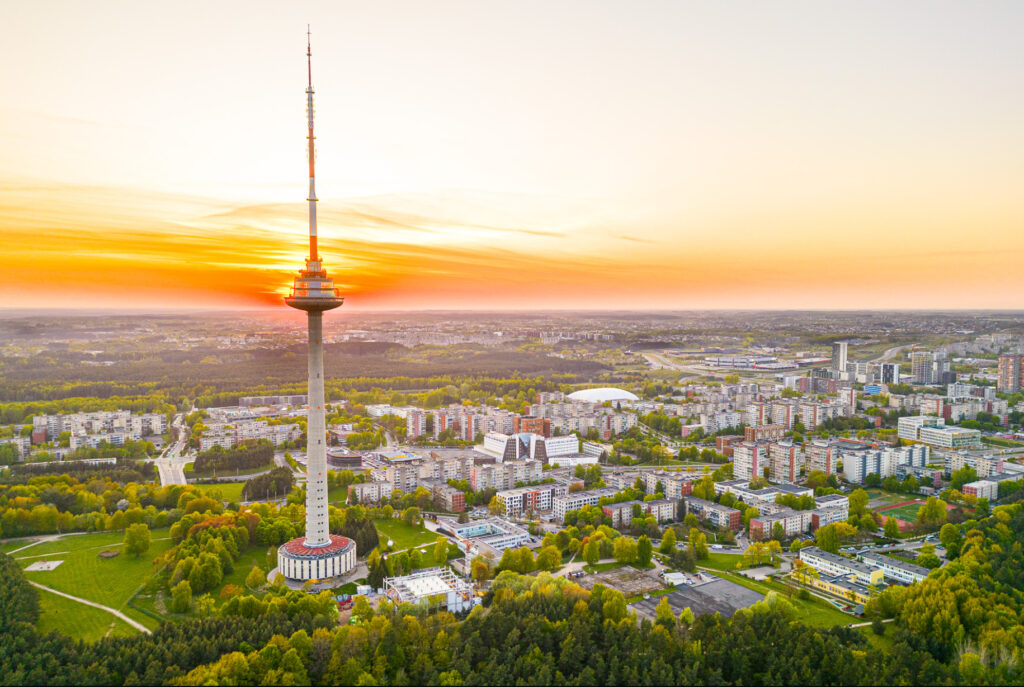
14. Vilnius Jewish Quarter and Choral Synagogue
• The Jewish Quarter, once the heart of the Jewish community in Vilnius, known as the “Jerusalem of the North.” The Choral Synagogue, built in 1903, is the only surviving synagogue in Vilnius after World War II.
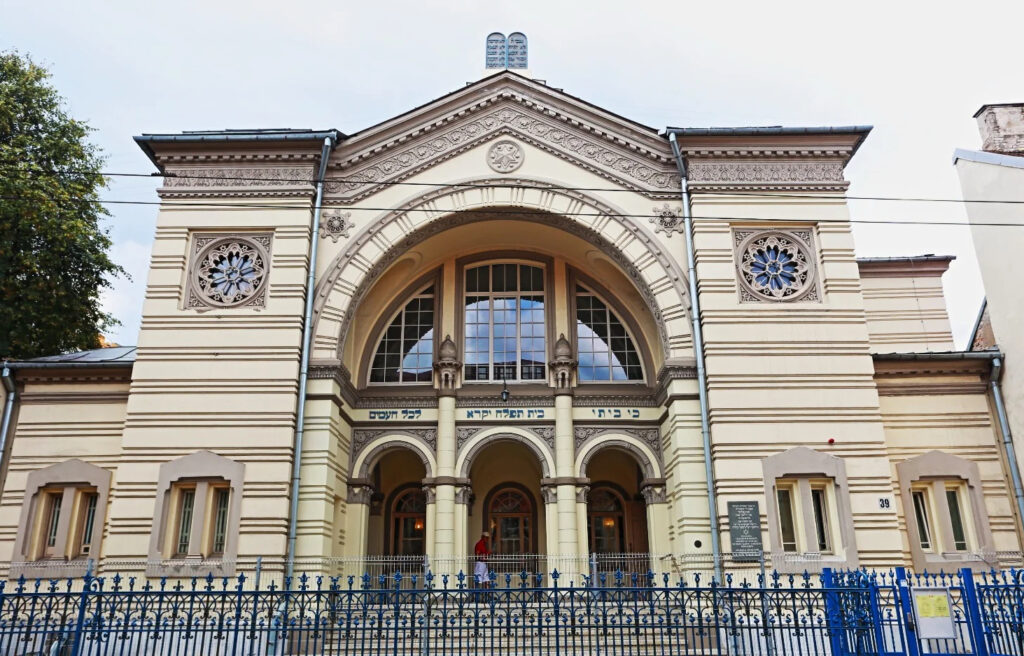
15. National Museum of Lithuania
• Lithuania’s largest repository of historical artifacts, the museum presents exhibitions on Lithuanian history, culture, and archaeology, located near Gediminas Hill.
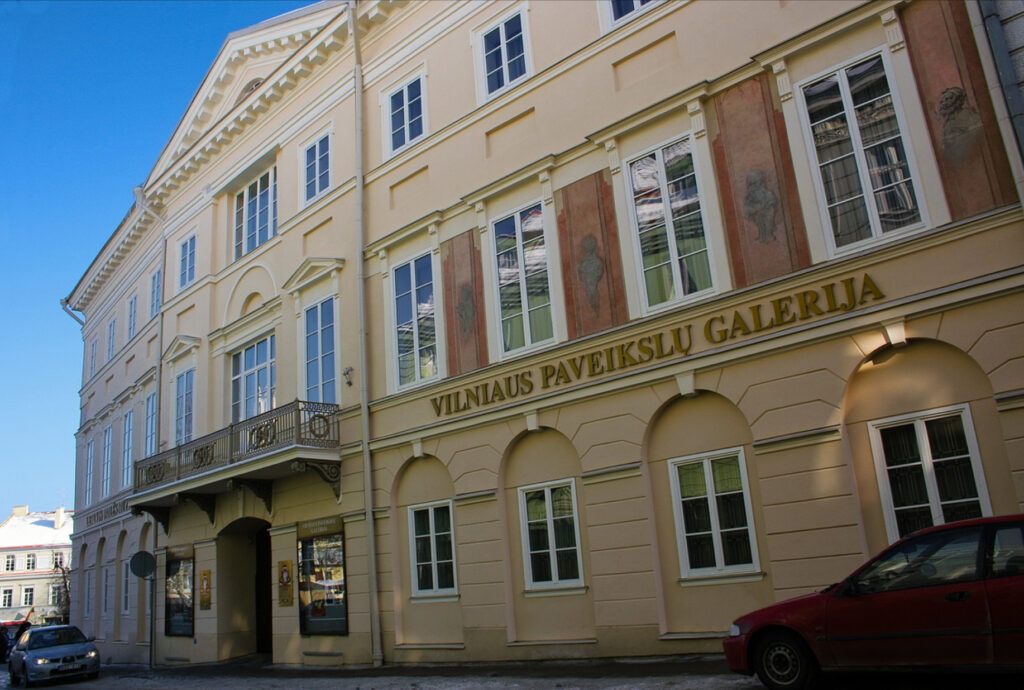
16. Vingis Park
• The largest park in Vilnius, Vingis Park is a popular recreation area for both locals and tourists. It hosts concerts, festivals, and other public events, while also providing scenic walking and cycling paths.
These monuments and attractions reflect Vilnius’ diverse historical and cultural heritage, making the city a must-visit for history enthusiasts and travelers alike.
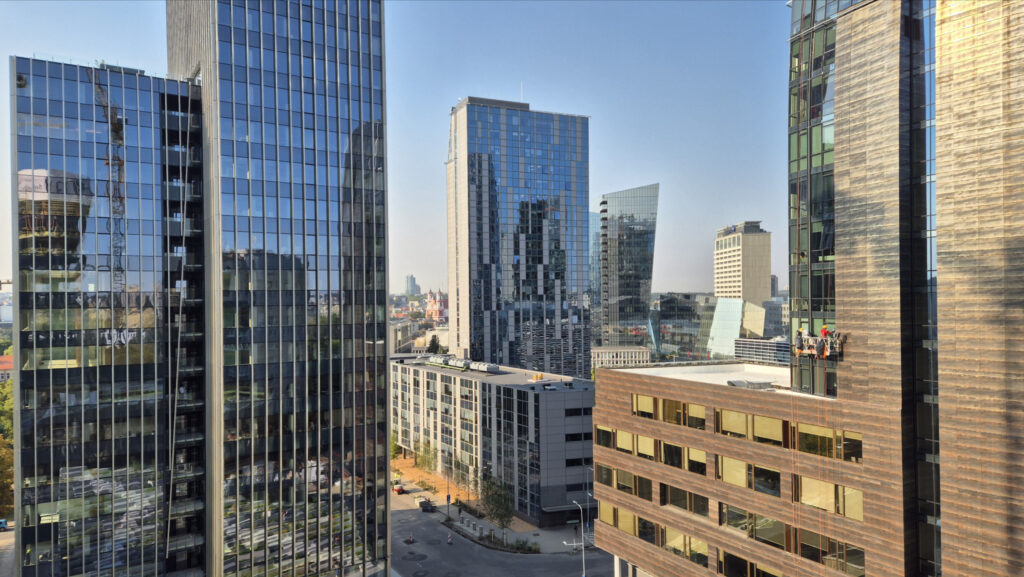
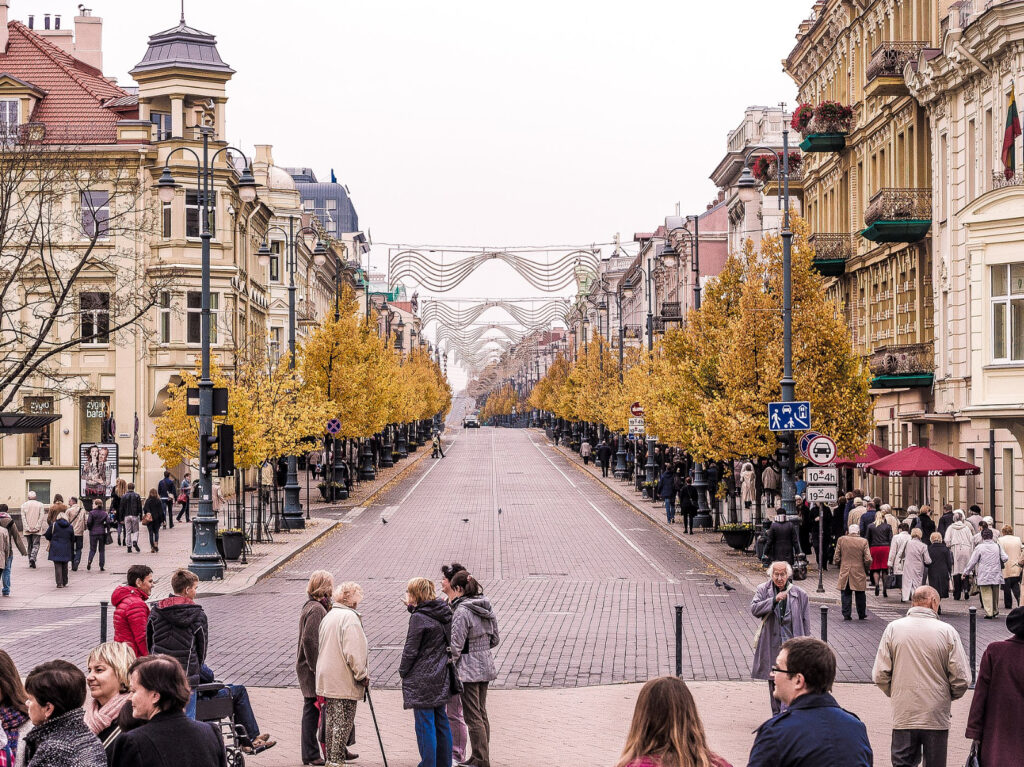
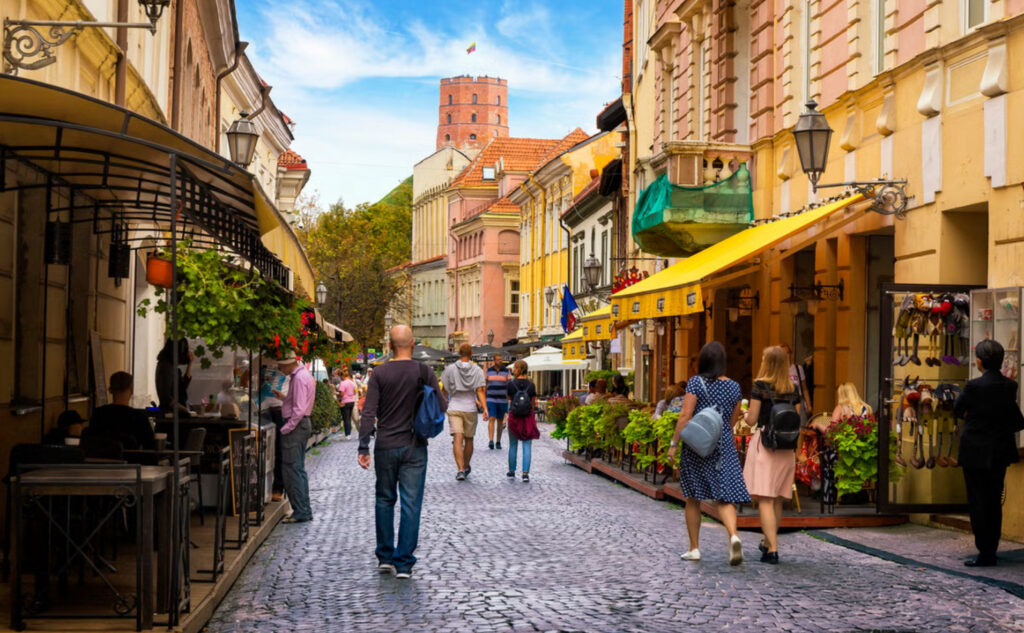
Here’s a one-day itinerary for visiting Vilnius, incorporating the city’s key historical sites and local food specialties:
Morning
1. Breakfast at Pinavija Café & Bakery (8:30 AM – 9:30 AM)
Start your day at this charming bakery, where you can sample traditional Lithuanian pastries such as šakotis (a tree cake) and kibinai (savory pastries filled with meat or vegetables). Pair your meal with a cup of Lithuanian coffee.
2. Vilnius Cathedral and Cathedral Square (9:45 AM – 10:15 AM)
After breakfast, head to Cathedral Square to explore Vilnius Cathedral, a neoclassical structure that’s one of the city’s most iconic landmarks. Don’t miss the chance to visit the crypts and learn more about Lithuania’s royal past.
3. Climb Gediminas Tower (10:30 AM – 11:15 AM)
Next, take a short walk up Gediminas Hill to visit Gediminas Tower. Enjoy panoramic views of the city and learn about the origins of Vilnius at the museum located inside the tower.
4. St. Anne’s Church and Bernardine Church (11:30 AM – 12:15 PM)
Walk down to the stunning Gothic St. Anne’s Church and the neighboring Bernardine Church, both essential stops to appreciate the architectural beauty of Vilnius.
Midday
5. Lunch at Etno Dvaras (12:30 PM – 2:00 PM)
For lunch, head to Etno Dvaras, a restaurant known for serving traditional Lithuanian dishes. Try cepelinai (potato dumplings stuffed with meat or cheese), šaltibarščiai (cold beet soup), or bulviniai blynai (potato pancakes). The restaurant is located in the heart of the Old Town, making it a convenient stop.
Afternoon
6. Explore Vilnius Old Town (2:15 PM – 3:30 PM)
After lunch, take time to wander through the narrow, winding streets of Vilnius Old Town, a UNESCO World Heritage site. Admire the well-preserved architecture, from medieval to Baroque, and soak in the atmosphere of this historic area.
7. The Gates of Dawn (3:45 PM – 4:15 PM)
Make your way to the Gates of Dawn, one of Vilnius’ most significant religious sites. Inside the chapel, you’ll find the revered icon of the Virgin Mary, which draws both locals and pilgrims from around the world.
8. Coffee Break in Užupis (4:30 PM – 5:15 PM)
Cross the bridge to the artistic district of Užupis, known for its bohemian vibe. Stop for a coffee break at one of the cozy cafés along Paupio Street and explore this self-declared “republic” with its quirky street art and sculptures.
Evening
9. Dinner at Lokys Restaurant (6:00 PM – 7:30 PM)
End your day with a medieval-style dinner at Lokys, one of Vilnius’ oldest restaurants, set in a 15th-century building. Specialties include wild game dishes like venison and boar, as well as hearty Lithuanian fare. Be sure to try mushroom soup in a bread bowl or honey cake for dessert.
10. Three Crosses Hill (7:45 PM – 8:30 PM)
After dinner, take a peaceful walk up to the Three Crosses Hill for a stunning view of the city at sunset. This monument is a symbol of Vilnius and offers a perfect way to end your day with breathtaking views of the Old Town below.
This itinerary covers the essential historical sites of Vilnius while giving you a taste of traditional Lithuanian cuisine. It’s paced to ensure you can explore the city’s highlights comfortably in one day.
